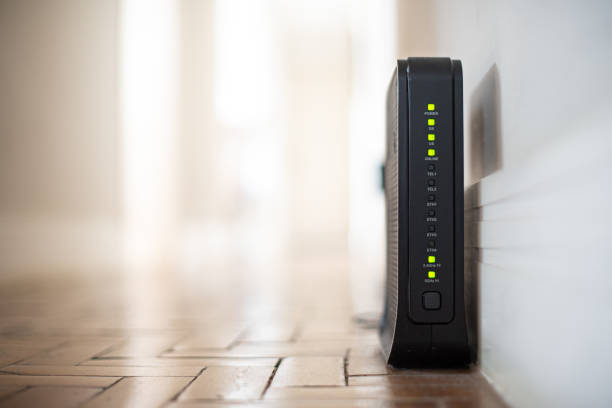Top Internet Providers in the US: Fast and Reliable Services
In today’s world, having access to high-speed internet is more important than ever. Whether you're working from home, streaming videos, or gaming online, choosing the right internet provider can make all the difference. This article explores the best internet service providers in the US, including fiber optic and unlimited plans, to help you make an informed choice.

Internet connectivity has become an essential utility in American households and businesses, with reliable service being as necessary as electricity or water. The U.S. market offers various internet service providers (ISPs) delivering different technologies, speeds, and service levels across urban and rural areas. Finding the right provider requires understanding the available options and how they align with your specific needs, from basic web browsing to bandwidth-intensive activities like video streaming, gaming, or working from home.
What to Look for in an Internet Service Provider?
When evaluating potential internet service providers, several key factors should influence your decision. Connection speed is paramount—measured in megabits per second (Mbps) or gigabits per second (Gbps), with download speeds typically higher than upload speeds. Reliability is equally important, as frequent outages can disrupt work and entertainment. Consider data caps as well, as some providers limit monthly usage, potentially resulting in additional fees or throttled speeds if exceeded.
Customer service quality varies significantly between providers, making it worthwhile to research satisfaction ratings and responsive support options. Contract terms also differ—some companies require long-term commitments with early termination fees, while others offer month-to-month flexibility. Additionally, examine installation fees, equipment rental costs, and whether the provider offers promotional pricing that increases after an introductory period.
How to Find the Fastest Internet in Your Area?
Identifying the fastest available internet in your location requires research and comparison. Start by using online availability tools provided by the Federal Communications Commission (FCC) or third-party comparison websites that show providers servicing your specific address. These tools typically display maximum advertised speeds, though actual performance may vary.
Speed requirements differ based on household needs. For basic email and web browsing, 25 Mbps may suffice, while households with multiple users streaming 4K content and gaming simultaneously might require 300+ Mbps. When researching, look beyond advertised maximum speeds and consider actual performance data from sources like the FCC’s Measuring Broadband America reports or consumer review platforms.
During provider evaluation, ask about typical speeds during peak usage hours (evenings), as network congestion can significantly impact performance. Some providers offer speed guarantees or allow trial periods to test actual performance before committing to service.
Unlimited and Fiber Optic Internet Plans
Fiber optic technology represents the gold standard for residential internet, transmitting data via light signals through glass or plastic fibers. This technology delivers symmetrical speeds—equal download and upload capabilities—making it ideal for video conferencing, cloud storage, and content creation. Fiber connections typically offer the lowest latency (delay in data transmission), which benefits online gaming and video calls.
Unlimited data plans have become increasingly common as households consume more bandwidth through streaming services, smart home devices, and remote work. These plans eliminate concerns about overage charges or throttling after reaching data thresholds. When comparing unlimited plans, verify whether there are any “fair use” policies that might still impose restrictions during network congestion periods.
While fiber offers superior performance, availability remains limited in many areas, particularly rural regions. Alternative technologies like cable, DSL, fixed wireless, and satellite fill these gaps, though each comes with different performance characteristics and limitations.
The Best Internet Service Providers for Fast and Reliable Service
Several national providers consistently rank well for speed and reliability across the United States. Xfinity by Comcast offers widespread cable internet coverage with speeds ranging from 50 Mbps to 2 Gbps in select areas. AT&T provides both fiber (up to 5 Gbps) and DSL options, with fiber expansion ongoing in metropolitan areas. Verizon Fios delivers fiber internet primarily in northeastern states, with symmetrical speeds up to 940 Mbps.
Spectrum (Charter Communications) provides cable internet without data caps across 41 states, while T-Mobile and Verizon now offer 5G home internet services as alternatives to wired connections in eligible locations. For rural areas, Starlink’s satellite internet has disrupted traditional satellite offerings with significantly improved speeds and lower latency, though weather sensitivity remains a consideration.
Major Internet Provider Comparison
| Provider | Technology | Max Download Speed | Typical Monthly Cost | Data Caps |
|---|---|---|---|---|
| Xfinity | Cable/Fiber | 2 Gbps | $30-$300 | 1.2 TB on some plans |
| AT&T | Fiber/DSL | 5 Gbps | $55-$180 | Unlimited on fiber |
| Verizon Fios | Fiber | 940 Mbps | $50-$90 | Unlimited |
| Spectrum | Cable | 1 Gbps | $50-$90 | Unlimited |
| T-Mobile Home | 5G | 182 Mbps | $50-$60 | Unlimited |
| Starlink | Satellite | 100-200 Mbps | $110-$120 | Unlimited |
Prices, rates, or cost estimates mentioned in this article are based on the latest available information but may change over time. Independent research is advised before making financial decisions.
Connection quality varies significantly by location, even within a provider’s service area. Urban centers typically have more provider options and faster speeds, while rural areas may be limited to DSL, fixed wireless, or satellite options. Some regions benefit from local or regional providers that offer competitive services worth investigating alongside national companies.
Evaluating Internet Service Reliability
Reliability metrics are crucial when selecting an internet provider, as even the fastest connection becomes worthless during outages. Look for providers that maintain robust infrastructure with redundant systems to minimize downtime. Some companies publish uptime statistics, though these should be verified through customer reviews and third-party assessments.
Weather resilience varies by technology—fiber and cable generally withstand adverse conditions better than satellite or fixed wireless services. Customer support availability becomes particularly important during outages, with 24/7 technical assistance and transparent communication about restoration timelines being valuable features.
Many providers now offer service guarantees or credits for extended outages, which can indicate confidence in their network reliability. When researching potential ISPs, inquire about their policies regarding service interruptions and compensation for significant downtime.
The internet provider landscape continues to evolve with ongoing infrastructure investments, emerging technologies like 5G fixed wireless, and expanding fiber networks. Competition in some markets has driven improvements in service quality and pricing, though significant disparities in access and affordability persist across different geographic and socioeconomic segments. As connectivity becomes increasingly essential for education, employment, and healthcare access, choosing the right provider remains an important decision for American households and businesses.




